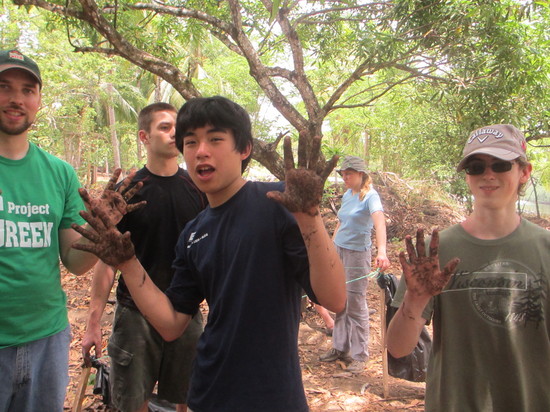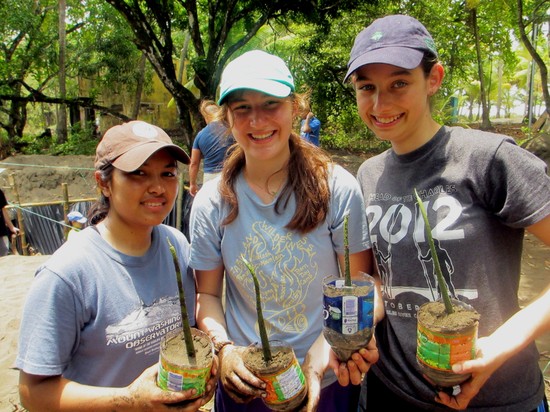By Ben Austin and Izzy Gray, Freshmen at Cambridge Rindge and Latin School in Cambridge, Mass.
Reforesting mangrove trees is hard work. It's dirty, too. Imagine your feet being soaked through with warm, gooey mud. Your hands are tired from working hard all day, and cuts from tree branches line your arms. You feel completely exhausted, but what you are accomplishing today will benefit the entire island of Paolo Seco for decades to come.
We, the ten Cambridge Rindge and Latin School students who won EF's Glocal Challenge, have been enjoying the Global Student Leaders Summit in Costa Rica this past week. On April 18, we spent eight hours reforesting mangrove trees. We learned a lot--not only about the danger of shoreline erosion, but also about the power people have to create change in their communities.
Pulling into the gravel road that led to La Isla Hotel and Resort, the bus was filled with nervous whispering and excitement. We slapped on some sunscreen, and settled down to watch an informative presentation that taught us how important healthy mangrove trees are to sustaining Paolo Seco's avid ecosystem. It was shocking to hear that humans were cutting down these trees that were so essential to the island's rich biodiversity.
Shortly after arriving, we rolled up our sleeves and headed to the swamp. We split up into three groups, each with its own task. One group cut old plastic bottles and soup cartons in half, which the next group filled with fertilized mud and placed a mangrove stalk in each. The third group then placed each container in the "nursery," a six-foot deep ditch.
Mangrove reforestation has a lot of international funding, including the Japanese Embassy, Municipality of Electricity, ICE, and other NGOs. Seeing these global organizations coming together to solve a local problem reinforced the idea that it is our job as citizens of the world to protect our earth's natural habitats. As Sally Delgado, the brain behind the mangrove project, said, "We must remember that this land belongs to the animals too, and that they were here long before us. We must get out of the mindset that these animals are living in our space. We are living in theirs!"
Shoreline erosion is not a unique problem to Costa Rica. Due to recent storms like Sandy and Irene, the United States is currently undergoing similar issues. Due to the temperate climate, mangrove trees are impossible to grow in the majority of coastal United States. However, we can still apply the lessons we learned from this experience in our own community. Groups of determined individuals harnessing the power of nature are found everywhere, and we have the power to join that movement.
All of us traveling to Costa Rica are excited to experience a new culture and share our ideas with students from around the world through EF's Summit! Follow us on Twitter at #EFSummit or on Facebook at www.Facebook.com/EFSummit.
About the Global Student Leaders Summit Series
This post is part of a series produced by The Huffington Post and EF Education First, in recognition of the 2013 EF Global Student Leaders Summit in Costa Rica (April 20 and 21). Each year, the EF Global Student Leaders Summit brings together hundreds of high school students and teachers from around the world for experiential learning tours and a leadership and innovation conference to help the next generation of leaders understand and solve critical global issues. For more information on EF Education First and the Global Student Leaders Summit, please click here.



